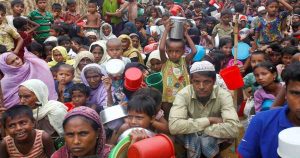Developing Asia’s economic revival is underway, supported by a healthy global recovery and progress on vaccines. The region’s growth is forecast to rebound to 7.3% in 2021, moderating to 5.3% in 2022. Excluding high-income newly industrialized economies, growth of 7.7% is forecast for this year and 5.6% for next year. Growth in 2021 is forecast to be strongest in East and South Asia, and more moderate in Central and Southeast Asia and the Pacific. The main risks to the outlook are new virus outbreaks or delays in vaccine procurement and administration. Prolonged unemployment and disrupted education caused by the pandemic could have long-term consequences.
• Developing Asia’s economy shrank by 0.2% in 2020, and divergences emerged within the region.
• Recovery has begun in developing Asia, but at different speeds. Growth in most regional economies strengthened in the latter part of 2020.
• Inflation in developing Asia will remain generally benign. Average inflation in the region is forecast to fall from 2.8% in 2020 to 2.3% in 2021.
• Risks are tilted to the downside and depend mainly on how the COVID-19 pandemic unfolds.
Inflation dynamics are projected to stay muted despite rising international commodity prices, as substantial slack in many economies will contain inflationary pressures. Average inflation in the region is forecast to fall from 2.8% in 2020 to 2.3% in 2021, as food-price pressures ease and inflation moderates in India and the PRC. Prices in 2022 are forecast to rise by 2.7%, driven mainly by the PRC, while inflation will be lower in Central Asia and South Asia—with more stable expectations on exchange rates and food prices anticipated to play a large role in these subregions.
School disruptions have taken extended periods of time during the pandemic, affecting millions of students in developing Asia. What students learn affect the level of skills they acquire in their lifetime, and eventually, their productivity as workers. The state of education today will affect the human capital of tomorrow, and it is important to see the long-term consequences of school closures on the quantity and quality of learning.
Green and social finance—investments and financing instruments designed to help achieve environmental and social goals—can help Asia and the Pacific achieve a more inclusive and sustainable recovery from the COVID-19 pandemic. Governments are central in shaping the development of green and social finance, but the private sector will also have an important role to play.
To achieve green, resilient, and inclusive recovery, the region needs to mobilize huge sums of capital. Solid evidence associates green and social finance with positive impacts globally and in Asia.
Recently, financial gain has joined altruistic motives for investment, which bodes well for future expansion. Policies implemented through regulatory and fiscal measures can further accelerate the development of green and social finance. – Asian Development Bank outlook, April 2021.




